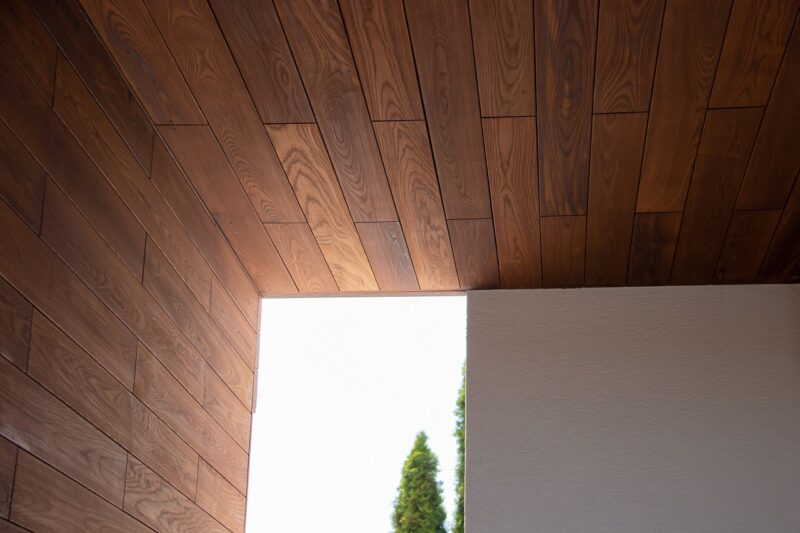Published: 12/02/24 By: Mike Bekin
Did you know that the oldest piece of carved timber found in the UK is over 6,000 years old? There is no denying that wood is a sturdy material. But, in recent years, sustainable modifications have brought new strengths to timber, creating more durable materials for your constructions. One such timber is ThermoWood.
Free from chemicals and paints, thermo modification enhances the natural properties of wood to create timber with increased resistance to decay, improved dimensional stability and a natural aesthetic. But which timber species is right for this process? To learn more, we have taken a look at the criteria used and some of the ThermoWood species already available.
Criteria Used to Find a Suitable Timber
Not all timber is created equal, and not every species will see the best results as a ThermoWood. Let’s take a closer look at how thermo modification experts choose their timber.
Cellular Structure
The cellular structure of a timber can affect how it responds to the thermo modification process. This is because the thermal modification works directly with the cellular structure, changing the lignin, hemicellulose and cellulose components of wood to enhance the overall performance. Without getting too deeply into the science behind it, timber with a suitable structure will see more enhanced properties, making them a better candidate for the process.
Density
Timber density can greatly affect the outcome of thermo modification. Denser woods generally respond better to the process, seeing greater stability and resistance after cooling.
Sapwood and Heartwood
Thermo modification can affect sapwood and heartwood differently. Generally, heartwood tends to respond more favourably because of its higher concentration of extractives, which enhance durability.
Moisture Content
Timber with a lower initial moisture content tends to undergo thermo modification more effectively. This is because the treatment involves carefully controlling the moisture levels in the wood during the process. Though the timber is kiln dried before processing, species with a naturally lower moisture content can still see better results.
Resin Content
Resin content can play a part in how successful thermo modification is. In particular, high resin content can make it more tricky to achieve uniform stability in the timber even after heating and can also alter the appearance of the ThermoWood. For that reason, lower resin content is usually a key factor when choosing a suitable timber.
Which Timber Species Can Be Thermo Modified?
Even after looking at the criteria, there are plenty of timber species which will benefit from being thermo modified. Some of the most popular choices include:
Find ThermoWood at EcoChoice
A chemical-free, durable timber which needs little maintenance in even the harshest conditions, there are good reasons for the popularity of thermo modification! If you are considering ThermoWood for your next project, we will be happy to talk further about whether this is the right product for your build. Get in touch to learn more or start an order today.
Tags: ThermoWood
Categories: Insights
